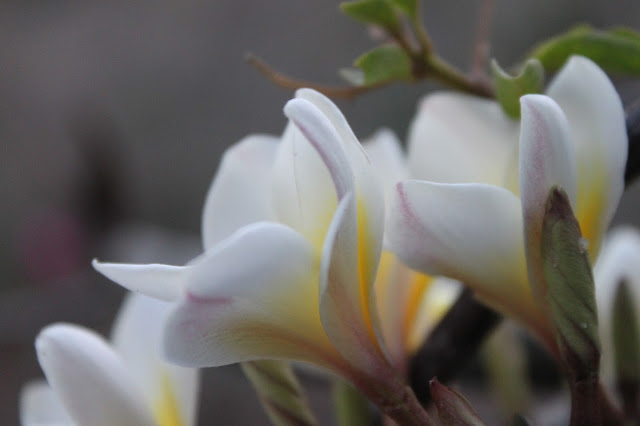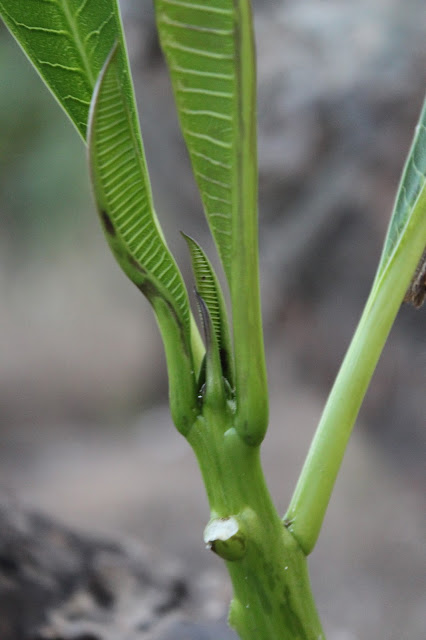Walking in the University Campus
I
had read of the proposal to construct homes in the Osmania University
Campus but for some strange reason it did not hit me till I talked of it over
phone with a friend; that it would take a part of the campus away. After I put
the phone away I wondered on how the campus has – since more than a year – been
an integral part of my life in Secunderabad. Silly enough, for a while after I
moved to Hyderabad was not aware to staying so near to the campus.
The
Campus.
More
than a year of walking and I continue to discover fresh-for-me paths, small
temples, neat dargahs and more in the campus. This week’s addition has been the
Deer Park. (A case report in Zoos Print published
during 1999 says that 10 deer were introduced in the 24 hectare demarcated area
in 1990 and during 1999 the deer population was 90+). It today lies
abandoned. New buildings slowly raise their presence amidst existing brilliant
architecture and houses – many of which lie uncared for. Open spaces, some of
them sports grounds, are sprinkled all over the campus. Many of these have
people engaged in badminton, volleyball, cricket and basketball. Lack of
structure and design in the manner with which people engage here takes me many
a time back to days when sports also mean fun time with friends. Then there are
tea-stalls. Few months back I had described, in length with details the tea-stalls,
to a friend who had just remarked, ‘Oh
JNU type’. Once in a blue moon I have tea at one of these. Last time I sat
on stones with a small glass in hand and watched the ground nearby smattered
with small, tender and happy yellow gifts from those standing tall and silent.
This
is from my notes during the initial days. ‘The
openness campus presents as if seeps in my being and occupies that space that
thoughts otherwise would have. I, as if, walk lighter in open spaces and this campus
helps. The trees and rocks have in their own way Indianized the campus and such
beauty they bring out as they sit, stand and lie along with each other. For
whatever reason they have not been managed (read interfered with) I am glad and
wish for the reasons to have a very very long life.’
Arts
College.
The
first time I saw the Arts College I went into a stunned silence. The only
parallel I could then draw of the feel on gets at the open space abutting the
magnificent structure was with the lawns around India Gate. Was fun coming
across its model some months later at the Purani Haveli.
It is here I have come across agitations including those by EFLU
students (they have a separate campus),
had candy ice-creams, seen family outings during weekends, hawkers roasting and
selling maize and peanuts, people studying and friends doing nothing in
particular other than being together. Not far is one of the most stunning of
post offices I have come across.
I
recalled reading of the Campus being large and this being one of the lovely
large University Campuses we have. While I have not yet been to Aligarh Muslim University
and have only managed unsatisfactory glimpses of Jawaharlal
Nehru University and Banaras
Hindu University, I recall my cycling and walking in
the Maharaja Sayajirao
University with fondness.
Birds.
Grey
Hornbills and Indian Peafowls I come across frequently and in pleasantly
surprising numbers. Indian Peafowls frequent the rocks leaving their marks as
well and are often heard. Grey Hornbills I first saw on an electricity pole – 3
of them atop a tall pole which supported 5 lights in a circular design. Another
memory which stands out is of them flying at eye-height in the Landscape
Garden. As I talked with 2 friends, who know much more of birds in the region
than me, I was told Indian Peafowls have increased in numbers recently with
reasons unknown while the Grey Hornbills seemed to have found sanctuary in the
large trees the Campus houses. They earlier had their homes in large trees on
the then outskirts of the city which gave way to ‘development’. Of course there
are Coucals and Grey Francolins in large numbers. While the Coucal family I saw
often during Mizoram days the Campus has provided pleasing sightings of the
Grey Francolins. Am today familiar with patches they frequent and when have a
‘mood’ to hear that rustle in the bushes walk towards these patches. Babblers,
Rose Ringed Parakeets, Asian Koels, Black Kites and others too provide company
as I walk.
Landscape
Garden.
This
is perhaps the only place I have come across a board which says ‘Learning and
teaching driving two and four wheelers is prohibited’. And of course, like in
other places where there is no penalty attached to bans, people take up
prohibited action unabashedly. Interestingly the Landscape
Garden too prohibits ‘out-siders’ and I wonder why every
other time I go for exercise there! Is it as a number of students from
hostels nearby come to study in the shades – during most months of the year? A
fascinating feature of this studying is chairs; some students come with their
chairs and some chairs I have come across secured to trees with help of chain
and locks. I have also heard conversations of students passing / selling these
on to other students. In days when people buy stuff when they are happy and
also when they are sad it was an interesting conversation to incidentally land
upon.
Plastic
and trash.
I
have never found a satisfactory answer to the question as to why so much
plastic trash lies all around (most parts used by people) the Campus. The level of
cleanliness takes a major plunge Southwards around select festivals. To add to
this select spaces like the seating at the sports stadium are messed up with
broken beer bottles. A friend and his
young one had accompanied one evening and the younger fellow kept on asking us
why people have left this so dirty? Don’t we have dustbins here? I often
wonder: People whose energies played a
role in carving out a fresh state are not affected by plastic and trash all
around in the very place associated with the new state? At times I wish there
could be a cleaning exercise on days like environment days and wildlife week we
celebrate and on others wish some of us resorted to arson frequently and burnt
a lot of what we came across!
Tomorrow
Can
the campus be promoted as a space to meet, to walk, to hold talks, book
readings, book releases and plays in the open. To appreciate (and study) plants, architecture, rocks,
trees, birds amidst them – as opposed to destroying them and then studying
their lifeless software models. All this and more could help generate positive
energies and be undertaken along with the regular academics. Walks around these
themes would be fun. A place without
brands looming loudly from the top and wi-fi engulfing us, a place the city is
proud of and one which is not in a rush to get developed and as a corollary be
no-where. Above all a place to meet friends, chat on serious nothings and catch
up without a reason.
Surely
there are better options of using the place than building homes. While housing
is a need we possibly could look at spaces outside these ‘Living Heritages’. A
Times of India report in 2010 states ‘The
once vast expanse of Osmania University was spread over 2,032 acres when it was
established in 1918. It now stands at almost half that size with just a little
over 1,100 acres on its name’. We surely need to save what remains.
Tomorrow,
I look forward to yet another evening walking amidst the rocks and
openness, caressing the tree trunks, talking to myself and taking in the
silences. And yes the ever selfish me also hopes for rains to join in the fun.
Images
are clicked on a single day at the Landscape Garden.
Other
pieces on the city



Comments
Post a Comment